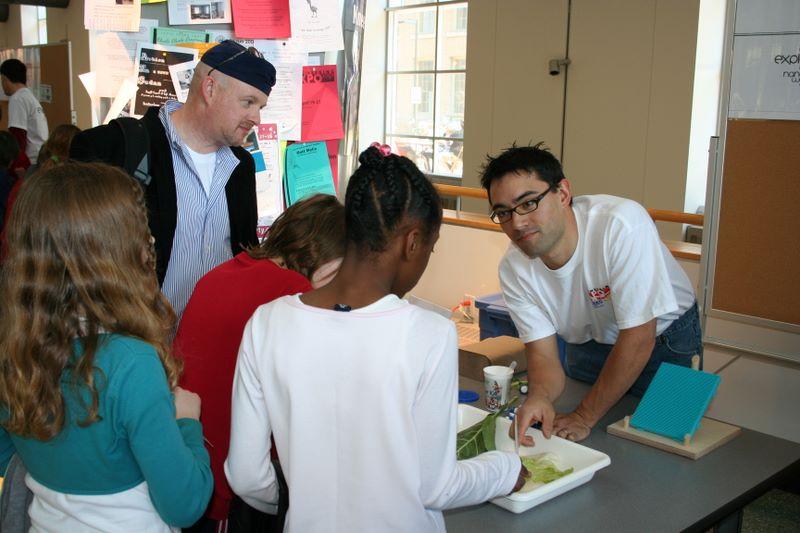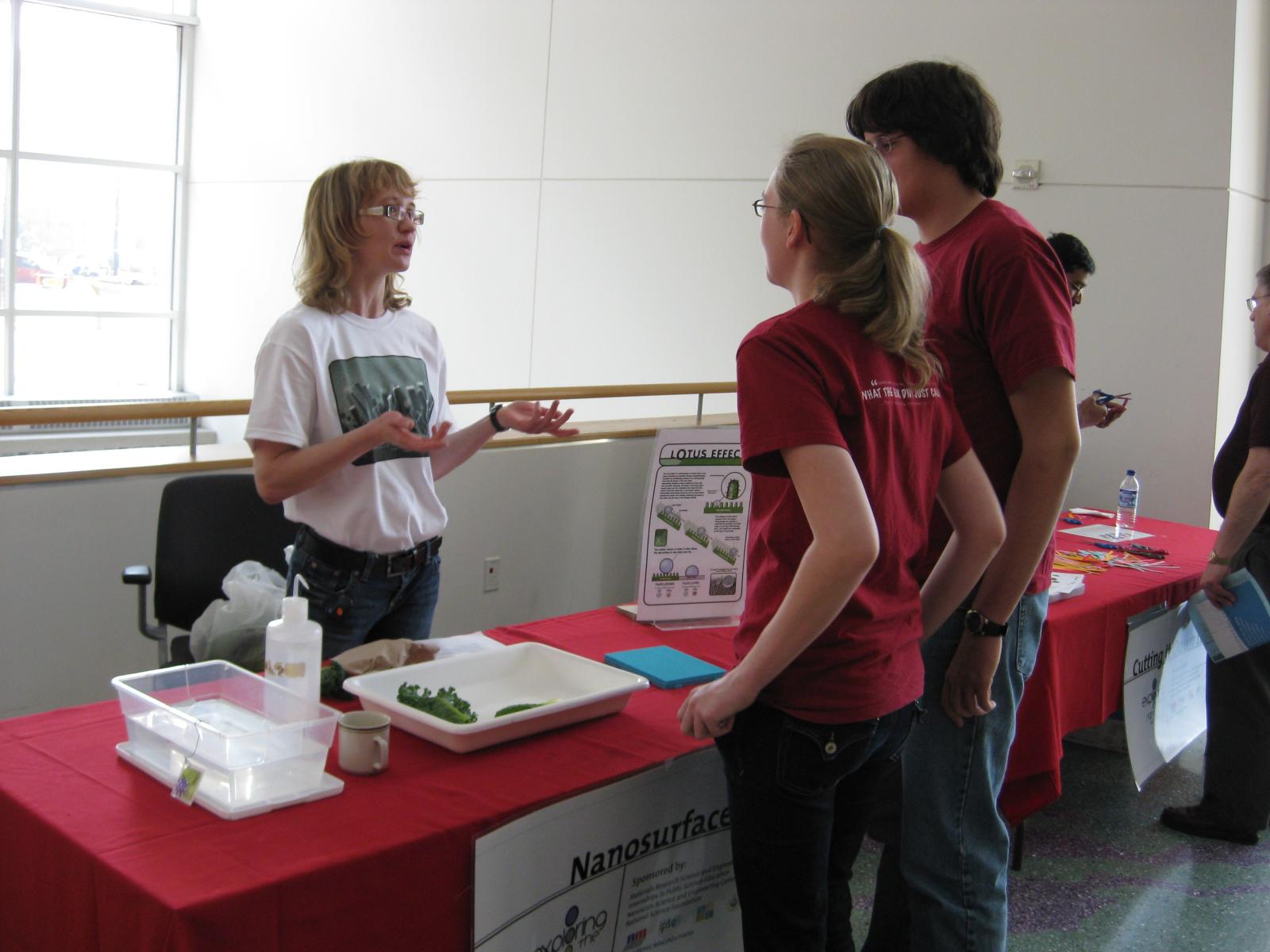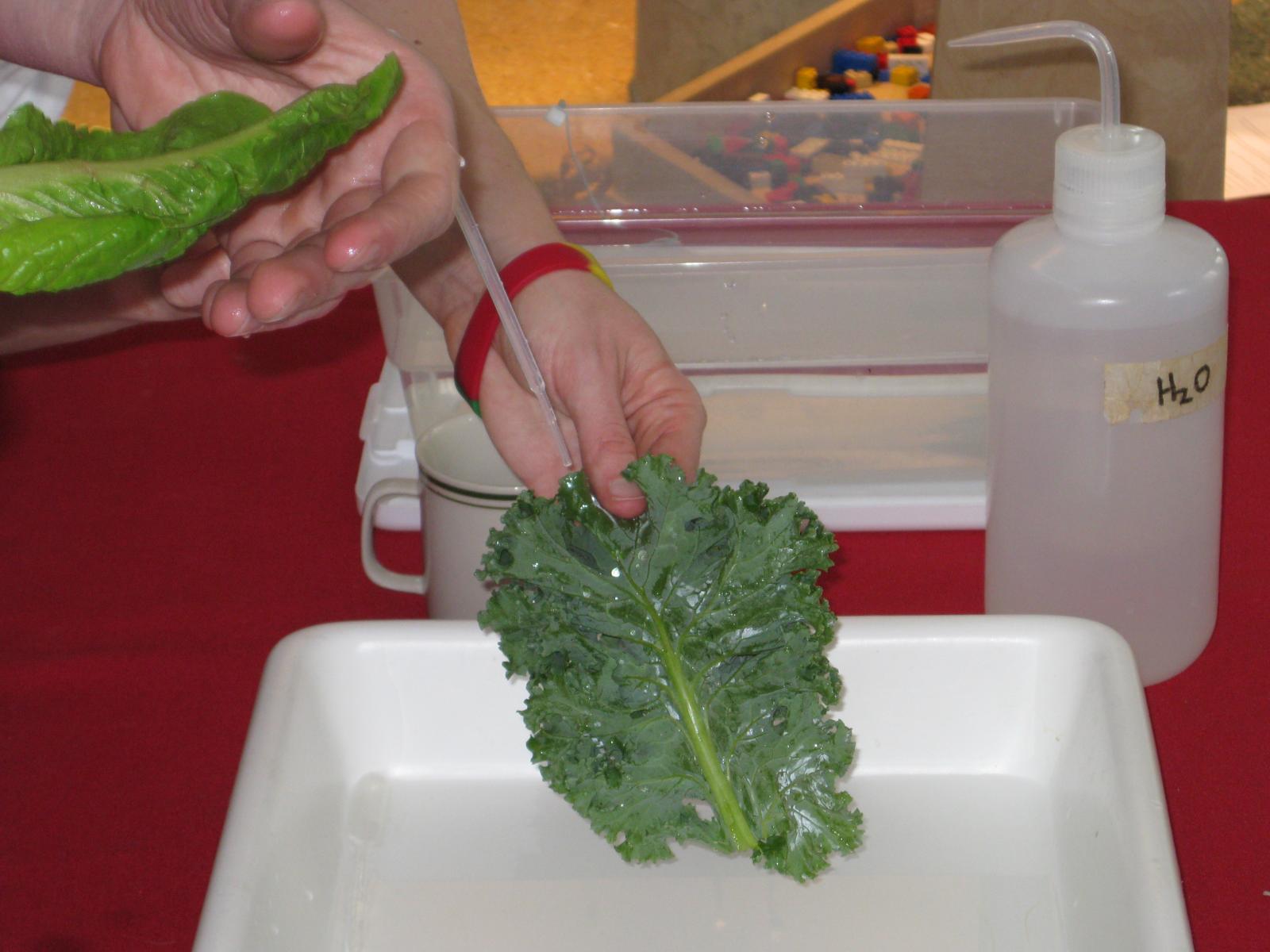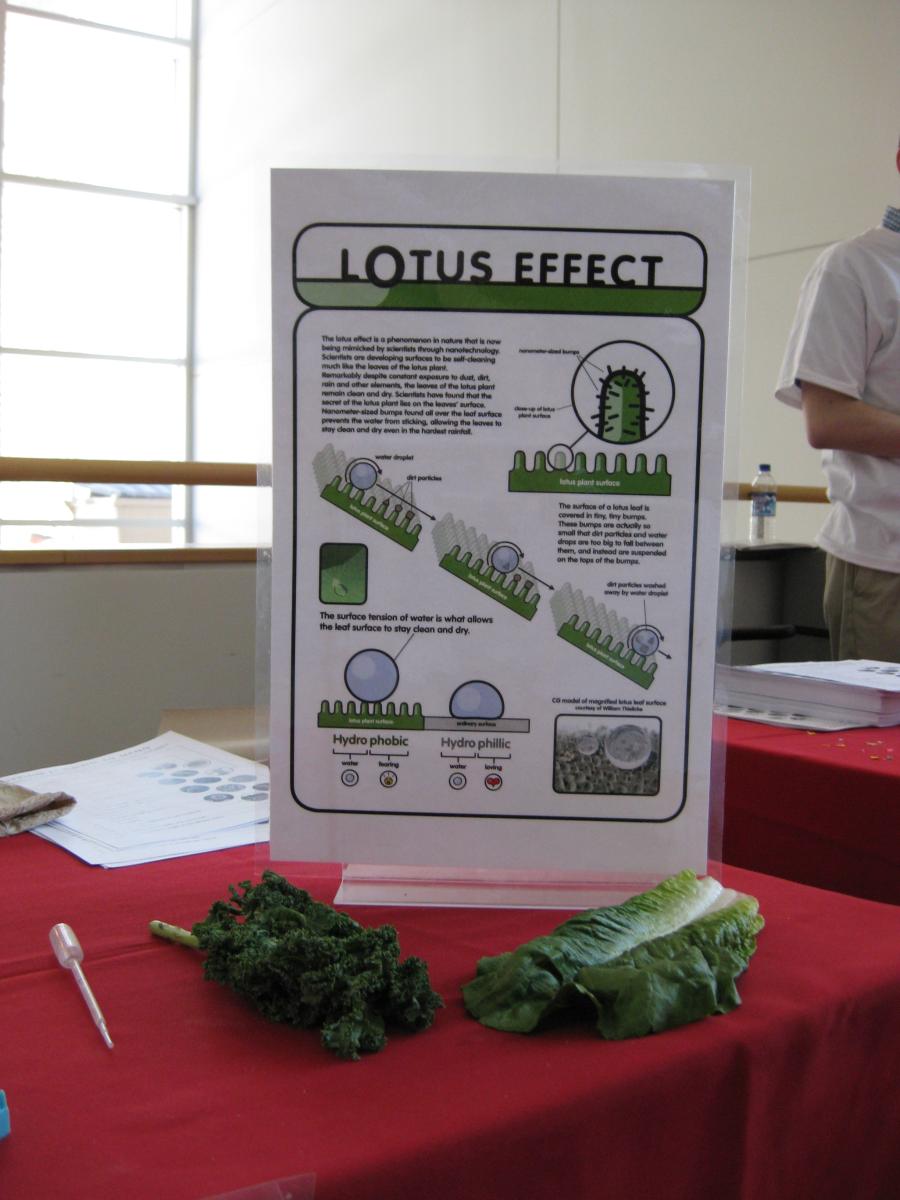DESCRIPTION
"Lotus Leaf Effect" is a cart demo that demonstrates how nature inspires nanotechnology by sharing how nanoscale features on a surface can influence how a material behaves at the macroscale. Visitors learn that lotus leaves (and many other plant leaves) are self cleaning and repel water, due to nanoscale features on the leaves. During the program, visitors compare how water interacts with regular lettuce and leaves that exhibit the lotus effect by dropping water onto the different types of leaves.
DESCRIPTION
"Lotus Leaf Effect" is a cart demo that demonstrates how nature inspires nanotechnology by sharing how nanoscale features on a surface can influence how a material behaves at the macroscale. Visitors learn that lotus leaves (and many other plant leaves) are self cleaning and repel water, due to nanoscale features on the leaves. During the program, visitors compare how water interacts with regular lettuce and leaves that exhibit the lotus effect by dropping water onto the different types of leaves.
TRAINING VIDEOS
OBJECTIVES
BIG IDEA
Nanoscale features of materials can alter macroscale behavior.
LEARNING GOALS
Nanoscale features of materials can alter macroscale behavior.
Nanotechnology can improve materials in our everyday lives.
Scientists copied a surface in nature that protects leaves and used it to improve paint.
NANO CONTENT MAP
Nanometer-sized things are very small, and often behave differently than larger things do.
Scientists and engineers have formed the interdisciplinary field of nanotechnology by investigating properties and manipulating matter at the nanoscale.
Nanoscience, nanotechnology, and nanoengineering lead to new knowledge and innovations that weren't possible before.
Credits
University of Wisconsin-Madison Materials Research Science and Engineering Center (MRSEC)
Developed for the NISE Network with funding from the National Science Foundation under Award Numbers 0532536 and 0940143. Any opinions, findings, and conclusions or recommendations expressed in this product are those of the authors and do not necessarily reflect the views of the Foundation.
Creative Commons Attribution Non-Commercial Share Alike 3.0 United States (CC BY-NC-SA 3.0 US).
View more details

NISE Network products are developed through an iterative collaborative process that includes scientific review, peer review, and visitor evaluation in accordance with an inclusive audiences approach. Products are designed to be easily edited and adapted for different audiences under a Creative Commons Attribution Non-Commercial Share Alike license. To learn more, visit our Development Process page.




